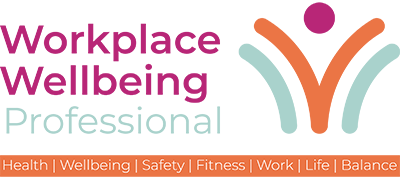With most people working 8 hours a day, five days a week, it’s important to examine how the workplace affects employees’ mental health. A Deloitte survey found that 77 percent of workers report experiencing burnout.
Burnout isn’t just a personal struggle; it affects business productivity. A World Health Organisation (WHO) study reveals that 615 million people suffer from depression and anxiety, causing an estimated $1 trillion annual loss in global productivity. When nearly 70 percent of professionals say their employers aren’t doing enough to address it, that’s a sign no organisation can afford to ignore. Employers must address this issue proactively to protect their employees and business performance.
Identifying the Silent Productivity Killer
The World Health Organisation (WHO) defines burnout as “feelings of energy depletion or exhaustion; increased mental distance from one’s job, or feelings of negativity or cynicism towards one’s job; and reduced professional efficacy.”
When we consider the link between stress and business productivity, it’s clear that employers must ensure the mental well-being of their employees. Recognising early signs is essential for taking action before productivity and morale suffer.
One of the most common signs of burnout is constant fatigue, even after rest. Individuals may struggle to relax or sleep, contributing to chronic tiredness. Burnout can also manifest physically, with symptoms such as headaches, loss of appetite, stomachaches, and a weakened immune system leading to frequent illness. A decline in both mental and physical health can affect attention span and engagement at work.
Burnout often causes emotional exhaustion and detachment from work. Employees may feel disconnected from their responsibilities, lose enthusiasm for tasks, and begin to question the value or purpose of their work. This emotional strain can disrupt workplace relationships, showing up as irritability or social withdrawal, such as arriving late, avoiding interactions, or struggling to concentrate. As a result, employees may become short-tempered with colleagues or clients and feel increasingly isolated or misunderstood.
Top Causes of Employee Burnout
Burnout often results from toxic work environments, unmanageable workloads, and a lack of support from management. Recognising the causes of burnout is crucial to combating it.
A toxic workplace culture is one of the most significant contributors to burnout. According to a McKinsey Health Institute (MHI) survey, a toxic workplace is the primary cause of adverse outcomes like burnout and high employee turnover. Toxic behaviours include unfair treatment, non-inclusivity, sabotage and unethical conduct, and unhealthy competition. These toxic behaviours can make employees feel undervalued, unsafe, and emotionally drained. A lack of support from managementcan significantly contribute to a toxic workplace, and employees may feel isolated at work, ultimately leading them to seek new opportunities.
An excessive workload causes employees to constantly struggle to keep up. Employees who lack control over their work environment, such as their schedule, assignments, or workload, can feel powerless. When work consumes most of one’s time and energy, leaving little room for personal commitments or relaxation, this leads to burnout.
On the other hand, employees with too little to do or monotonous tasks can also become disengaged. Uncertainty about tasks, deadlines, and deliverables often leads to missed expectations, blame, and negative performance reviews, all of which can affect mental well-being.
By understanding and addressing these root causes of burnout, employers can take proactive steps to create a healthier, more supportive work environment that fosters employee well-being and long-term business success.
Building a Burnout-Resistant Culture
It’s no longer enough for businesses to acknowledge burnout. Leaders must act. Companies that want a resilient, high-performing workforce must prioritise people and take proactive steps to protect employee well-being, not just in day-to-day operations, but in every transformation they lead.
Mental health should be treated as a business priority. This means offering access to counselling, employee assistance programmes, mindfulness sessions, and regular training to help staff manage pressure and stay connected. Encouraging movement, through lunchtime walks, yoga, or discounted gym access, also helps regulate stress. Even small actions like regular screen breaks can reduce fatigue and reset focus.
But well-being can’t thrive in a toxic or unfair culture. Discrimination based on race, gender, or mental health remains far too common and erodes trust. Organisations must adopt zero-tolerance policies on bias, take complaints seriously, and ensure every employee feels safe, valued, and empowered to speak up.
Managers are on the front lines of burnout prevention, but only if they’re equipped to recognise the signs. Training leaders to spot emotional exhaustion, behavioural changes, or disengagement is essential. Equally important is creating a culture where people trust leadership to respond with empathy and fairness.
This becomes even more critical during periods of organisational change. Burnout isn’t a buzzword—it’s an occupational phenomenon with real financial and human costs. As businesses restructure, adopt new technologies, or shift ways of working, supporting employees through uncertainty is essential to avoid disengagement and attrition.
FDM’s Change and Transformation Practice helps organisations implement largescale tech transformation and adoption projects, embedding consultant well-being from the outset to ensure long-term business success for clients. Preventing burnout isn’t about a one-off initiative; it’s about designing workplaces that are inclusive, balanced, and built for people to thrive. When companies take care of their people, their people take care of the business.

Sheila Flavell
Sheila Flavell is the COO for FDM Group, and is passionate about digital skills and diversity. Sheila has over 31 years' experience in the global tech sector. She played an integral role in FDM's flotation on AIM in 2005 and was a key instigator of the management buy-out of the Group in 2010 and the subsequent listing onto the main FTSE Market in 2014. Sheila's knowledge of the sector has been crucial in driving FDM's global expansion programme, taking them into the FTSE250.


